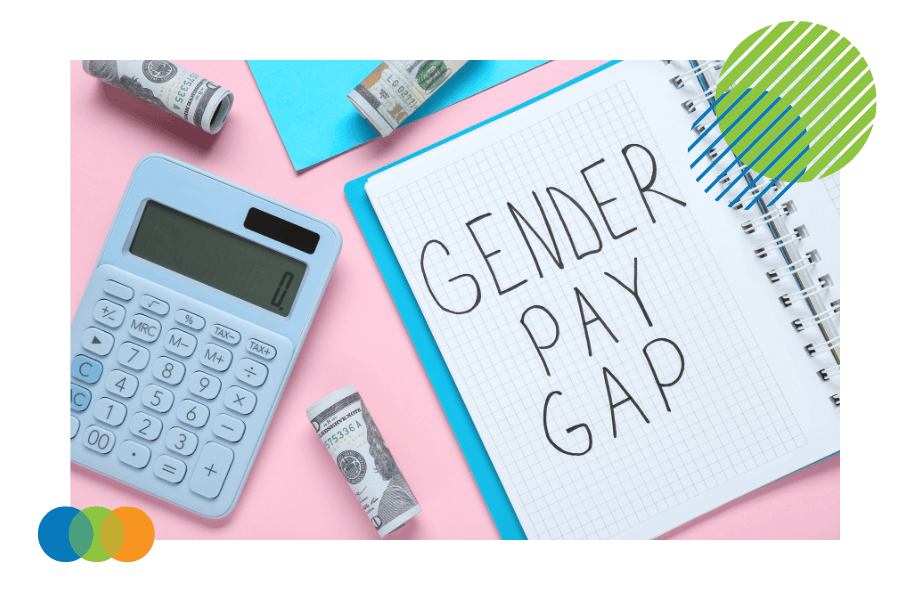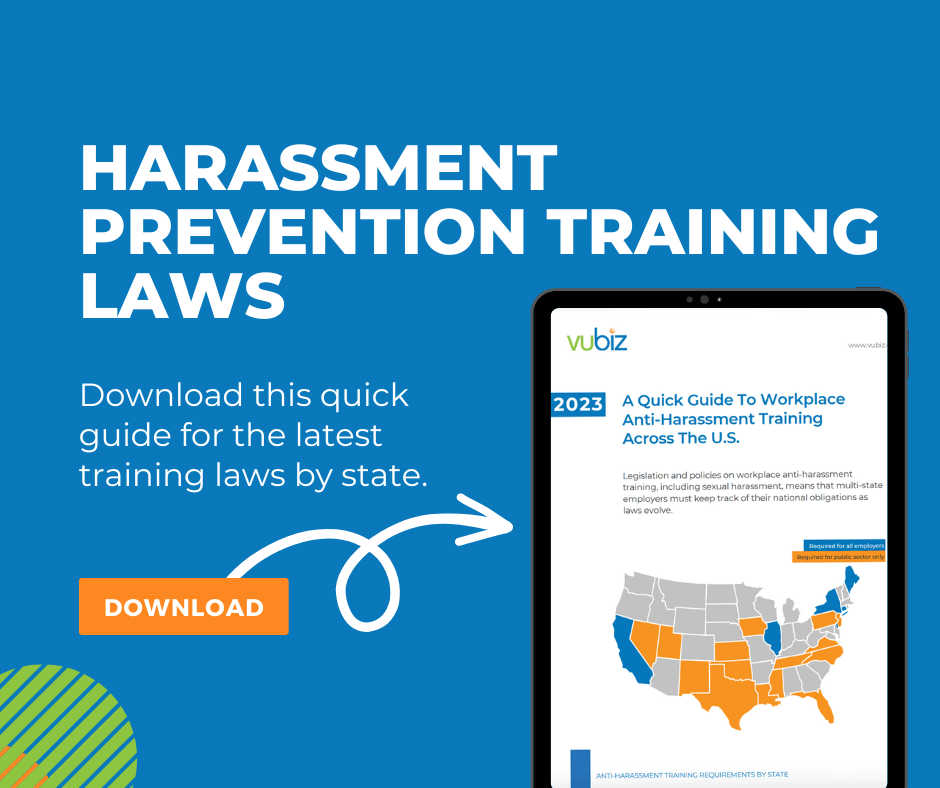 |
Written by Liz McDermott |

Discriminatory behavior can significantly impact workplace culture, leading to adverse effects on employees and the organization as a whole. Lack of sexual harassment and discrimination prevention training can create a hostile work environment, leading to decreased morale, increased turnover, and decreased productivity.
In this article, we explore the types of discrimination in the workplace, protected classes, how to identify and prevent discrimination, and frequently asked questions about discrimination on the job.
Understanding Discrimination In The Workplace
Discrimination refers to any action or behavior that leads a particular person or group of employees to be treated differently or unfairly based on a specific protected characteristic. Discrimination can take many forms, including direct, indirect, victimization, and harassment.
Discrimination can lead to legal liability for employers, resulting in costly legal fees and potential damages. Employers should take proactive steps to prevent discrimination in the workplace. You can provide anti-discrimination and DEI training to promote diversity and inclusion and foster a culture of respect and equality.
What are the four types of discrimination in the workplace?
The four types of discrimination recognized by the law cover the nine protected characteristics: age, disability, gender reassignment, marriage and civil partnership, pregnancy and maternity, race, religion or belief, national origin, sex, and sexual orientation.
Direct Discrimination
Direct discrimination occurs when someone is treated less favorably than others based on their protected characteristics. For example, if an employer refuses to hire an applicant because of their age or sexual orientation, it would be considered direct discrimination.
Indirect Discrimination
Unlike direct discrimination, indirect discrimination occurs when policies, procedures, or practices are applied equally to everyone but disproportionately impact specific groups. For example, requiring all employees to work on Saturdays may disproportionately affect a group of employees who observe religious practices that prohibit them from working on Saturdays.
Victimization
Victimization occurs when an individual is mistreated because they have made a complaint or raised a concern about discrimination. For example, if an employee is passed over for a promotion because they have made a discrimination complaint, it would be considered an act of victimization.
Harassment
Harassment occurs when an individual is subjected to unwanted conduct that violates their dignity or creates an intimidating, hostile, degrading, humiliating, or offensive environment. For example, other employees make inappropriate comments about a fellow employee or ask inappropriate questions.

Common Protected Classes
Protected classes are people legally protected from discrimination based on certain characteristics. The Equality Act lists nine protected characteristics: racial discrimination, color, religion or belief, sex, sexual orientation, gender identity, age discrimination, disability discrimination, and pregnancy and maternity.
Sexual Orientation
Sexual orientation is a protected characteristic of discrimination due to an individual's sexual attraction and relationships with others. Discrimination based on sexual orientation can take many forms, including denying employment, promotion, or training opportunities or creating a hostile environment. As a result of the #MeToo movement and the number of women who experienced workplace discrimination, sexual harassment training is now required in many states, including California, New York, Illinois, and Connecticut.
Protected Characteristics and Liability
Employers are legally obligated to ensure that their policies, procedures, and practices do not discriminate against individuals based on their protected characteristics. Failure to do so can result in liability for discrimination claims.
Direct and Indirect Discrimination Liability
Direct discrimination liability occurs when an employer treats an individual with nine protected characteristics less favorably than others based on their protected characteristic. Indirect discrimination liability occurs when an employer applies a policy, practice, or procedure that puts individuals with protected characteristics at a disadvantage.

Identifying Discrimination in the Workplace
Identifying discrimination at work can be challenging, but it is essential for creating a positive and inclusive work environment. It is important to look for signs of intolerance, such as unequal treatment, exclusion, or sexual harassment.
Employers should have clear policies and procedures for reporting and investigating discrimination claims. They should also train employees on what constitutes workplace discrimination and how to avoid it.
Need Discrimination Prevention Training For Your Business?
Consider Vubiz's Sexual Harassment and Discrimination Prevention Training program if you need employee education to support your business. Our English, French, and Spanish programs are designed to help employers prevent and address workplace discrimination, promoting a positive and inclusive work environment.

Frequently Asked Questions About Types of Discrimination
Q: What is the most common form of discrimination in the workplace?
A: The most common form of discrimination in the workplace is race discrimination, usually related to sex, race, or age.
Q: What is an example of direct discrimination?
A: An example of direct employment discrimination would be an employer refusing to hire an applicant because of their age, gender, or sexual orientation.
Q: What is an example of indirect discrimination?
A: An example of direct and indirect discrimination would be requiring all employees to work on Saturdays, which may disproportionately affect employees who observe religious practices that prohibit them from working on Saturdays.
Q: What is an example of unfair treatment or discrimination?
A: An example of unfair discrimination would be denying an employee a promotion because of their protected characteristics, such as their race, gender, or sexual orientation.
Conclusion: Employers Can Prevent Discrimination At Work
Discriminatory behavior can significantly impact workplace culture, leading to negative effects on employees and the organization as a whole. Employers need to understand the various types of workplace discrimination, common protected classes, and how to identify and address discrimination in the workplace.
By promoting a positive and inclusive work environment, employers can create a culture of respect and equality, leading to increased morale, productivity, and success.
For more information, please contact us to inquire about our Sexual Harassment and Discrimination Prevention training.

